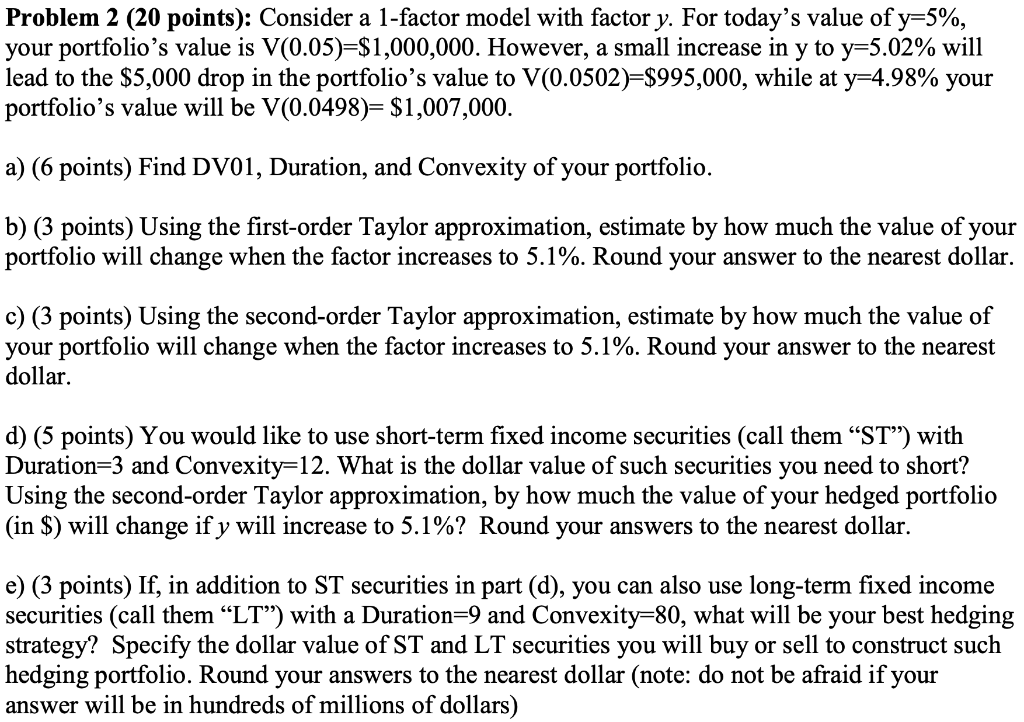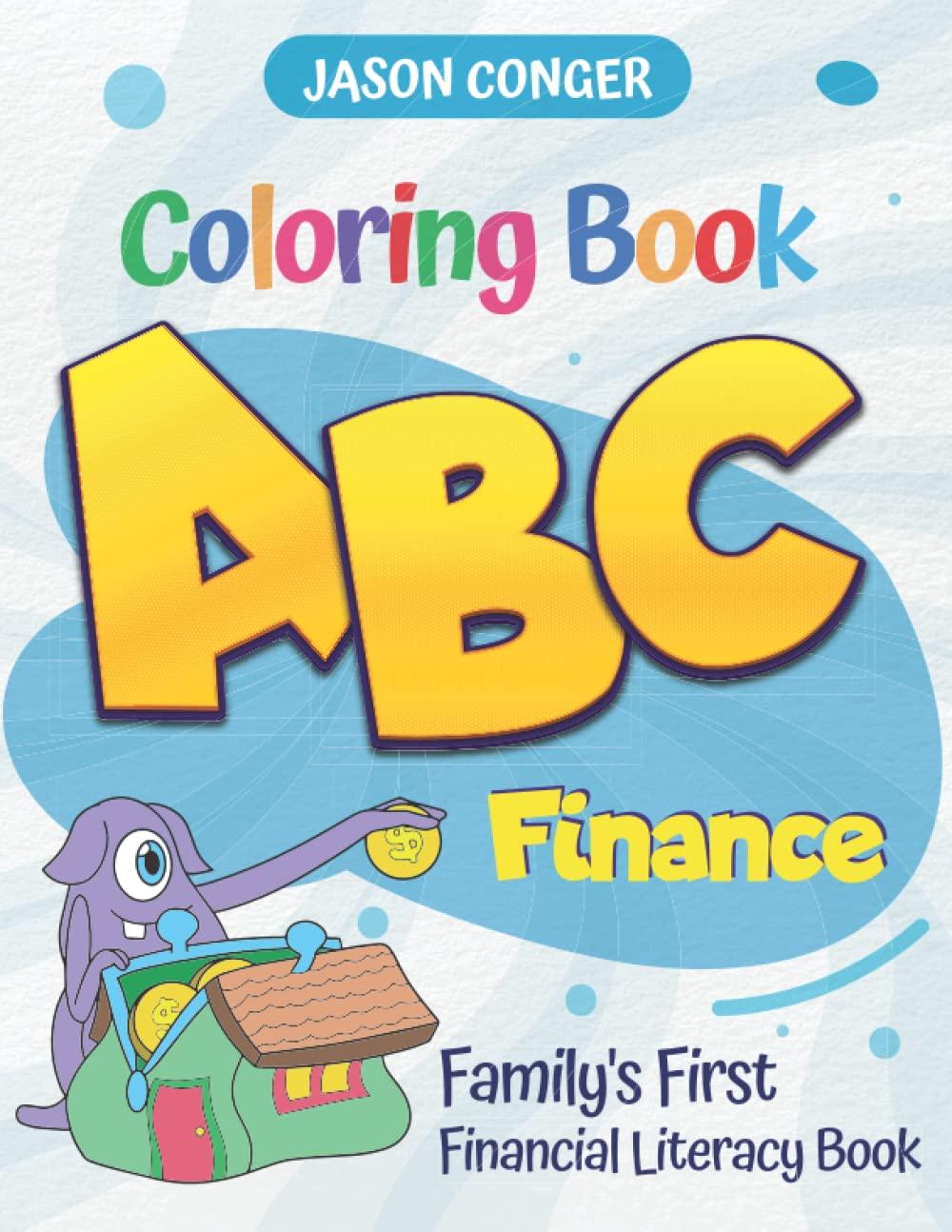

Specific assignment instructions: All interest rates are annual interest rates with semi-annual compounding. All coupon rates are annual rates paid semi-annually. All bonds have a $100 face value. In some of the questions you may want to use Taylor' approximation formula (this formula should have been covered in your prerequisite math course): df(x) Taylor' first-order approximation: f(x + Ax) = f(x) + Ax df(x) Taylor' second-order approximation: f(x + Ax) f(x) + (4x) dx 4x + 0.5 d2f(x) dx dx2 You may also find the following formulas useful: "(7) 12 and d? (0) 2 = dx dx2 x3 Problem 2 (20 points): Consider a 1-factor model with factor y. For today's value of y=5%, your portfolio's value is V(0.05)=$1,000,000. However, a small increase in y to y=5.02% will lead to the $5,000 drop in the portfolio's value to V(0.0502)=$995,000, while at y=4.98% your portfolio's value will be V(0.0498)= $1,007,000. a) (6 points) Find DV01, Duration, and Convexity of your portfolio. b) (3 points) Using the first-order Taylor approximation, estimate by how much the value of your portfolio will change when the factor increases to 5.1%. Round your answer to the nearest dollar. c) (3 points) Using the second-order Taylor approximation, estimate by how much the value of your portfolio will change when the factor increases to 5.1%. Round your answer to the nearest dollar. d) (5 points) You would like to use short-term fixed income securities (call them ST) with Duration=3 and Convexity=12. What is the dollar value of such securities you need to short? Using the second-order Taylor approximation, by how much the value of your hedged portfolio (in $) will change if y will increase to 5.1%? Round your answers to the nearest dollar. e) (3 points) If, in addition to ST securities in part (d), you can also use long-term fixed income securities (call them LT) with a Duration=9 and Convexity=80, what will be your best hedging strategy? Specify the dollar value of ST and LT securities you will buy or sell to construct such hedging portfolio. Round your answers to the nearest dollar (note: do not be afraid if your answer will be in hundreds of millions of dollars) Specific assignment instructions: All interest rates are annual interest rates with semi-annual compounding. All coupon rates are annual rates paid semi-annually. All bonds have a $100 face value. In some of the questions you may want to use Taylor' approximation formula (this formula should have been covered in your prerequisite math course): df(x) Taylor' first-order approximation: f(x + Ax) = f(x) + Ax df(x) Taylor' second-order approximation: f(x + Ax) f(x) + (4x) dx 4x + 0.5 d2f(x) dx dx2 You may also find the following formulas useful: "(7) 12 and d? (0) 2 = dx dx2 x3 Problem 2 (20 points): Consider a 1-factor model with factor y. For today's value of y=5%, your portfolio's value is V(0.05)=$1,000,000. However, a small increase in y to y=5.02% will lead to the $5,000 drop in the portfolio's value to V(0.0502)=$995,000, while at y=4.98% your portfolio's value will be V(0.0498)= $1,007,000. a) (6 points) Find DV01, Duration, and Convexity of your portfolio. b) (3 points) Using the first-order Taylor approximation, estimate by how much the value of your portfolio will change when the factor increases to 5.1%. Round your answer to the nearest dollar. c) (3 points) Using the second-order Taylor approximation, estimate by how much the value of your portfolio will change when the factor increases to 5.1%. Round your answer to the nearest dollar. d) (5 points) You would like to use short-term fixed income securities (call them ST) with Duration=3 and Convexity=12. What is the dollar value of such securities you need to short? Using the second-order Taylor approximation, by how much the value of your hedged portfolio (in $) will change if y will increase to 5.1%? Round your answers to the nearest dollar. e) (3 points) If, in addition to ST securities in part (d), you can also use long-term fixed income securities (call them LT) with a Duration=9 and Convexity=80, what will be your best hedging strategy? Specify the dollar value of ST and LT securities you will buy or sell to construct such hedging portfolio. Round your answers to the nearest dollar (note: do not be afraid if your answer will be in hundreds of millions of dollars)








